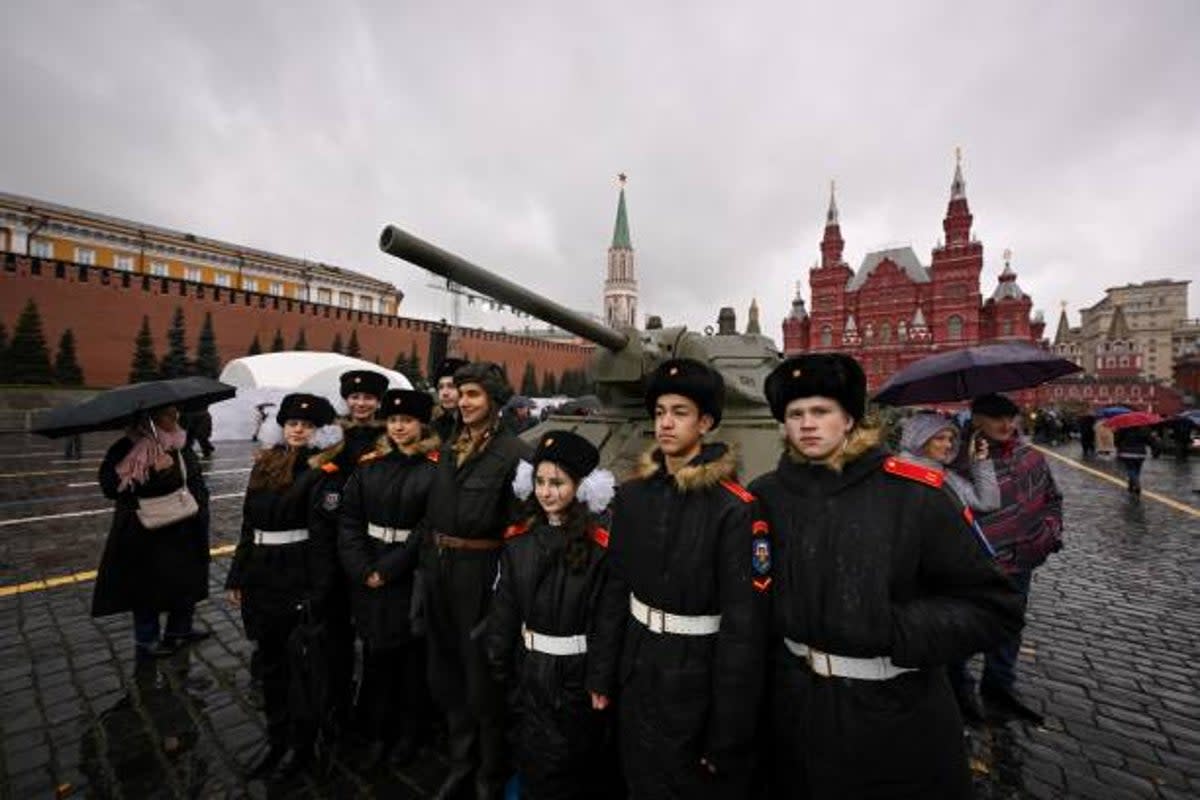Putin orders Russian military to increase troop numbers by 170,000

- Oops!Something went wrong.Please try again later.
Russian president Vladimir Putin has ordered a significant boost in the country’s military, increasing the troop numbers by nearly 170,000 to reach a total of 1.32 million as the Kremlin’s full-scale invasion enters its 22nd month.
Mr Putin signed the decree on Friday in response to “the aggressive activities of the Nato bloc” and its special military operation in Ukraine, as stated by the Kremlin.
“In accordance with the decree of Russian president signed on November 29, 2023, the maximum size of the armed forces of the Russian Federation has been increased by 170,000 military personnel to 1,320,000 military personnel,” the defence ministry said.
It has expanded the Russian forces to approximately 2.2 million, including 1.32 million troops.
The decree came into effect immediately.
The defence ministry said the order doesn’t imply any “significant expansion of conscription”, and the increase will occur gradually over time by recruiting more volunteers.
“In this regard, there are no plans to significantly increase the conscription of citizens for compulsory military service. Mobilisation is not planned,” the statement read.
This marks the second expansion of the Russian army since 2018.
The earlier increase, consisting of 137,000 troops, was ordered by Mr Putin in August 2022, bringing the military’s total numbers to approximately two million personnel, including around 1.15 million troops.
The order came into force on 1 January 2023, and the following month, he ordered the mobilisation of 300,000 reservists to strengthen the forces in Ukraine.
It comes as Ukraine and Russia aim to advance their positions and reinforce their forces in the ongoing conflict, where the battle lines have seen minimal shifts in recent months.
They are also seeking reinforcement and stronger defences as the temperature plummets to sub-zero.
Meanwhile, Nato has recently enlarged to incorporate Finland, a country with an extensive border with Russia. Additionally, Sweden has submitted an application to join.
The size of Russian and Ukrainian military casualties in the protracted war remains uncertain. Russian forces claim that just over 6,000 troops have died in the action, but observers suggest that the actual number is much higher.
In October, the UK defence ministry stated that Russia had “likely suffered 150,000 to 190,000 permanent casualties”, referring to the number of troops killed or permanently wounded.
The Kremlin has been reconsidering the size of its forces since hopes for a quick victory in Ukraine faded, despite initially deeming them sufficient. Russia has faced fierce resistance, especially as Ukrainian president Volodymyr Zelensky strengthened Nato support.
In its efforts to strengthen forces, Mr Putin’s decree on mobilisation remains indefinite, allowing the military to summon additional reservists as required. The decree also prohibits volunteer soldiers from ending their contracts.
The campaign to attract more voluntary recruits has included advertisements promising cash bonuses, cold calls to eligible men by recruiters, and partnerships with universities and social service agencies to attract students and the unemployed across Russia.
Rights groups and social media reports have claimed that Russian authorities offered amnesty to prisoners in exchange for military duty during the Ukraine war.
These initiatives come on top of the draft that enlists approximately 120,000 to 140,000 men twice a year for a one-year mandatory service. Authorities assert that individuals conscripted for compulsory service are not sent to Ukraine.
According to the rules, all Russian men aged 18 to 27 have to serve one year in the military. However, a large number try to avoid the draft by citing health reasons and seeking other deferments granted to university students.
This year, authorities also raised the upper limit for mandatory service to 30 years of age starting from 1 January.

